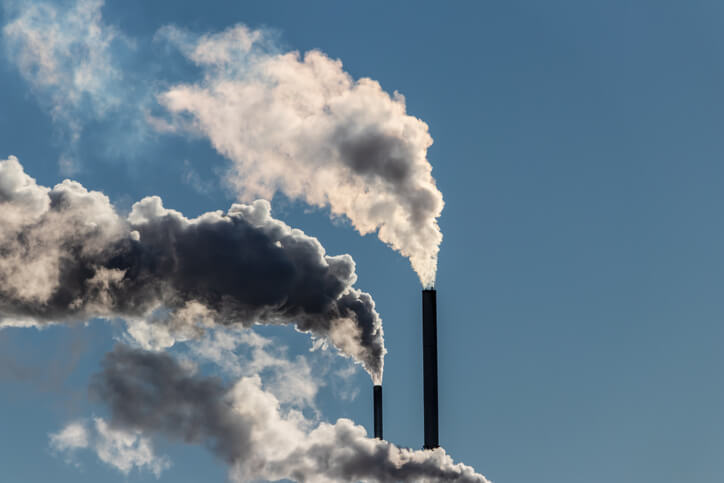The world is facing an unprecedented challenge as we strive to meet our climate targets and avoid the worst impacts of climate change. One of the key tools in our arsenal is carbon capture technology, which has the potential to capture and store carbon emissions from power plants and industrial processes. But why does carbon capture matter, and how can technology help us achieve our climate goals?
In this article, we’ll explore the role of carbon capture in mitigating climate change, the different types of technology available, and the challenges and opportunities for its widespread deployment. From capturing carbon dioxide emissions from power plants to using industrial waste as a feedstock for new products, there are many ways that carbon capture can help us transition to a low-carbon future. So, let’s dive in and explore why carbon capture is a crucial part of our climate solution.
Understanding the Impact of Carbon Emissions on Climate Change
Carbon dioxide (CO2) is a greenhouse gas that contributes to global warming and climate change. When CO2 and other greenhouse gases are released into the atmosphere, they trap heat from the sun and cause the planet to warm. This warming can disrupt ecosystems, cause sea levels to rise, and lead to more frequent and severe weather events.
The burning of fossil fuels such as coal, oil, and natural gas is one of the main sources of carbon emissions. In addition, industrial processes such as cement production and chemical manufacturing also release large amounts of CO2. According to the Intergovernmental Panel on Climate Change (IPCC), global CO2 emissions must be reduced by at least 50% by 2050 to limit global warming to 1.5°C above pre-industrial levels.
Carbon capture technology offers a potential solution to this problem by capturing and storing carbon emissions before they are released into the atmosphere. By doing so, we can reduce the amount of CO2 and other greenhouse gases in the atmosphere and slow the pace of climate change.
The Need for Carbon Capture Technology in Meeting Climate Targets
Carbon capture technology is a critical tool in our efforts to meet climate targets and transition to a low-carbon economy. The Paris Agreement, which was signed by 195 countries in 2015, aims to limit global warming to well below 2°C above pre-industrial levels and pursue efforts to limit the temperature increase to 1.5°C. Achieving these goals will require a rapid reduction in global carbon emissions, and carbon capture technology can play a key role in this effort.
In addition to reducing emissions from power plants and industrial processes, carbon capture technology can also be used to capture carbon from the air. This process, known as direct air capture, involves using technology to pull CO2 out of the atmosphere and store it underground or repurpose it for other uses. While direct air capture is still in the early stages of development, it has the potential to become an important tool in our efforts to combat climate change.
The Role of Carbon Capture Technology in Reducing Carbon Emissions
Carbon capture technology works by capturing carbon dioxide before it is released into the atmosphere and then storing it underground or repurposing it for other uses. There are three main types of carbon capture technology: pre-combustion, post-combustion, and oxyfuel combustion.
Carbon capture technology has the potential to reduce carbon emissions from power plants and industrial processes by up to 90%. In addition, captured CO2 can be repurposed for other uses, such as enhanced oil recovery or the production of new products such as plastics and building materials.
Types of Carbon Capture Technology
Pre-combustion carbon capture involves converting fossil fuels into a gas before they are burned. The resulting gas stream is then separated into hydrogen and CO2, with the CO2 captured and stored underground.
Post-combustion carbon capture involves capturing CO2 from the flue gas that is produced when fossil fuels are burned. This process is used in power plants and other industrial processes, and the captured CO2 is typically stored underground.
Oxyfuel combustion involves burning fossil fuels in a mixture of oxygen and recycled flue gas, which produces a concentrated stream of CO2 that can be captured and stored.
In addition to these three main types of carbon capture technology, there are also emerging technologies such as direct air capture and carbon mineralization. Direct air capture involves using technology to pull CO2 out of the atmosphere and store it underground or repurpose it for other uses. Carbon mineralization involves converting captured CO2 into a stable, solid form that can be used as a construction material or for other purposes.
Carbon Capture Technology Implementation and Challenges
While carbon capture technology has the potential to play a significant role in reducing carbon emissions, there are also challenges to its widespread deployment. One of the main challenges is the high cost of implementing carbon capture technology, which can make it difficult for companies to justify the investment.
In addition, there are technical challenges associated with carbon capture technology, such as the need for large amounts of energy to capture and store CO2. There are also concerns about the safety and effectiveness of underground storage, as well as the potential for leakage and other environmental risks.
To address these challenges, governments and private sector organisations are investing in research and development to improve carbon capture technology and reduce costs. In addition, policies such as carbon pricing and incentives for companies to invest in carbon capture technology can help to encourage its widespread deployment.
Examples of Successful Carbon Capture Projects
Despite the challenges associated with carbon capture technology, many successful projects already demonstrate its potential. For example, the Texas Petra Nova carbon capture project captures CO2 from a coal-fired power plant and stores it underground. This project has the capacity to capture 1.6 million metric tons of CO2 per year, which is equivalent to the emissions from 350,000 cars.
In addition, Iceland’s Orca carbon capture project uses direct air capture technology to remove CO2 from the atmosphere and store it underground. This project has the potential to capture 4,000 metric tons of CO2 per year, which is equivalent to the emissions from 870 cars.
The Future of Carbon Capture Technology
As the world continues to grapple with the challenge of climate change, carbon capture technology is likely to play an increasingly important role in reducing carbon emissions. Advances in technology and research are likely to make carbon capture more effective and affordable, while policies and incentives can help to encourage its widespread deployment.
In addition, emerging technologies such as direct air capture and carbon mineralisation offer new opportunities for capturing and repurposing carbon emissions. With continued investment and innovation, carbon capture technology has the potential to become a critical tool in our efforts to combat climate change.
Government and Private Sector Initiatives for Carbon Capture and Climate Change
Governments and private sector organisations around the world are investing in research and development to improve carbon capture technology and reduce its cost. In addition, policies such as carbon pricing and incentives for companies to invest in carbon capture technology can help to encourage its widespread deployment.
For example, the U.S. Department of Energy’s Office of Fossil Energy is investing in research and development to improve carbon capture technology and reduce its cost. In addition, the U.S. Congress recently passed the 45Q tax credit, which provides a financial incentive for companies to invest in carbon capture technology.
Private sector companies such as ExxonMobil and Shell are also investing in carbon capture technology as part of their efforts to reduce their carbon footprint and meet climate targets.
The full article by Lauren McGuire of NES Fircroft can be found here


